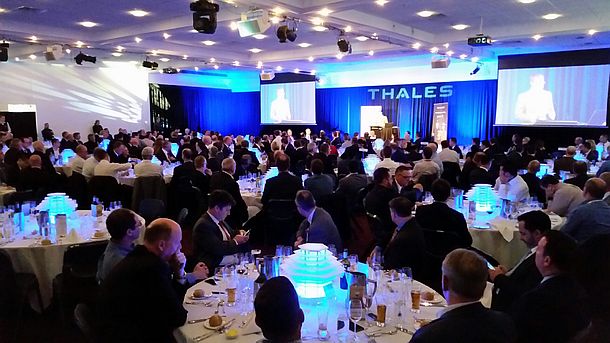Katherine Ziesing | Canberra
There were a few speaking highlights at MilCIS in Canberra last week, with Air Vice Marshal Andrew Dowse, Head of ICT Operations in CIO Group, giving a ‘state of the union’ update on satcoms and various comms programs in particular.
“The various JP2008 phases have been delivering enhanced satcom systems comprising the four segments of space, anchoring, terminal and network management,” AVM Dowse explained. “However, it has not been without issues. With JP2008 wideband phases running both sequentially and concurrently, we effectively did not keep the segments synchronised, especially due to the time taken to acquire terminal capabilities. Now, as significant numbers of WGS certified terminals are being delivered, we are finding we are constrained by anchoring capacity.
“The high bar set to access WGS … has made it difficult for other government agencies … to access the WGS constellation.”
“Additionally, the high bar set to access WGS, in terms of infrastructure and service management requirements, has made it difficult for other government agencies, which don’t have military-sized budgets, to access the WGS constellation. Defence is currently working closely with wider government, and the Australian Border Force in particular, to facilitate increased utilisation of this Whole of Government resource.
“JP2008 is also introducing a wideband TDMA satcom capability to enable new satcom architectures and thereby access greater space, terminal and anchoring segment efficiencies and flexibility.”
Time Division Multiple Access or TDMA is a method used to enable multiple earth stations or VSAT terminals to transmit intermittently on the same frequency, but with the timing of their transmissions so arranged such that the bursts do not overlay when they arrive at the satellite, but arrive in sequence and thus are all successfully received.
“However, implementing new architectures and concepts of operations for TDMA satcom requires a holistic approach, and has presented a range of challenges,” AVM Dowse continued. “These challenges include integrating new satcom network architectures into the existing Defence ICT systems and across the four satcom segments, and introducing new methods of planning and operation to make the most of the efficiencies and flexibility offered by TDMA.”
 The opening dinner at MilCIS 2016. Credit: ADM (David Jones)
The opening dinner at MilCIS 2016. Credit: ADM (David Jones)
Other challenges facing current Defence satcom projects include:
- ensuring satcom segments being delivered to different Defence internal customers integrate at all levels;
- integration of satcom with the wider Defence ICT systems to ensure end-to-end security, resilience and redundancy; and
- preserving Australia’s space interests in orbital and spectrum filings.
“In sustainment, we are also facing significant challenges in cost effective maintenance of legacy systems,” AVM Dowse confirmed. “There are many legacy systems approaching end of life, or that have been extended beyond life of type, and a significant portion of the overall support cost is allocated to managing obsolescence and addressing mid-life upgrades to maintain and/or improve performance, usability, reliability and maintainability.
“Now I’m not just saying this to dwell on mistakes of the past. As I will note later, satcom technology continues to evolve and new demands are emerging. We need to learn from the past, and plan and implement future capabilities in a way so we don’t repeat past mistakes and adequately manage identified challenges.
“The bottom line is that Defence requires satcoms be provided as soon as we need it, to a variety of fixed and mobile users, integrated with other communications technologies, with as much capacity as we need and wherever we are in the world ... but also, we need it to be affordable and with some level of assurance,” AVM Dowse concluded.
He also acknowledged that the ADF will have to adopt a hybrid solution of military and commercial satcom use in order to fulfil its mission. Inmarsat’s Andy Start, who made the business case for such a hybrid solution supported by international examples, expanded upon this theme. He outlined the innovative nature of commercial versus military satellites, as commercial satellites are upgraded or refreshed every four years while military satellites have a 15-year refresh rate.
Perhaps one noticeable omission was any update on Defence’s ERP project, a multi-year multi-billion effort to modernise a raft of older systems from any one in CIOG. Despite the White Paper and Integrated Investment Plan giving key enablers such as Defence ICT an extra $5 billion in funding, the area is still plagued by legacy integration issues and a perceived lack of operational focus versus back of house processing.




